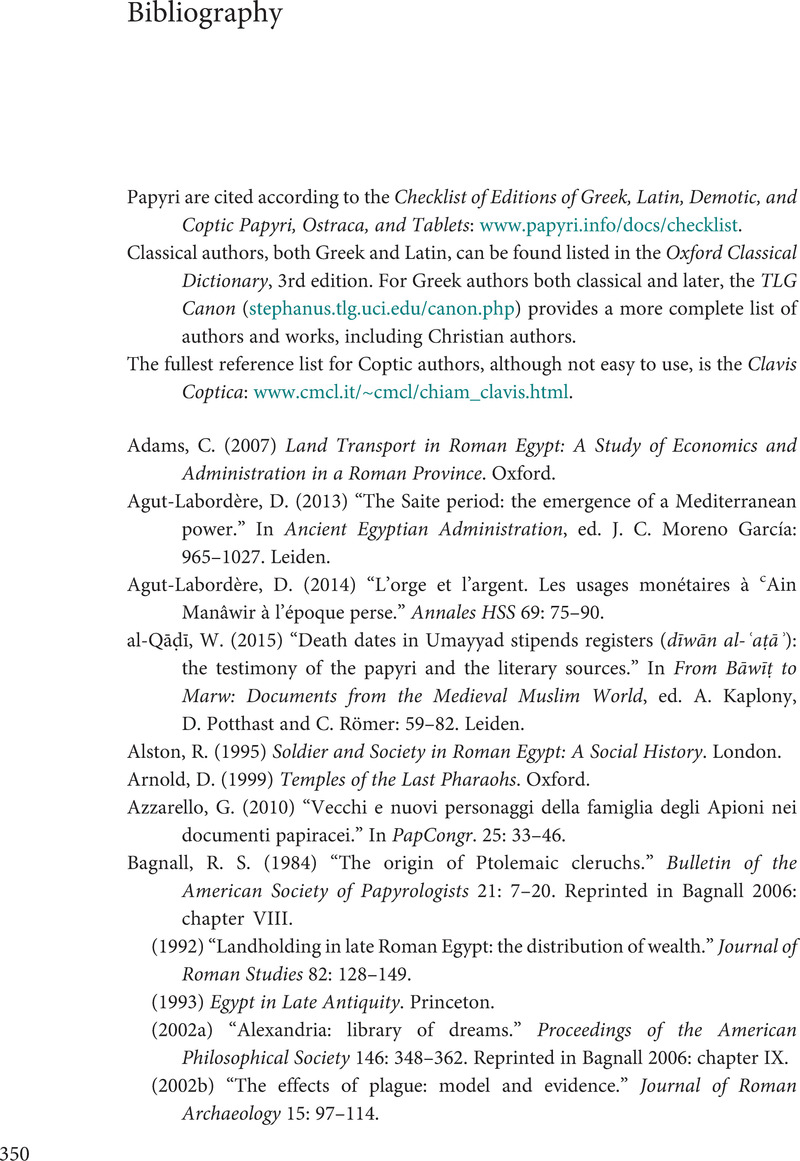Book contents
- Roman Egypt
- Roman Egypt
- Copyright page
- Contents
- Illustrations
- Maps
- Boxes
- Contributors
- Preface
- Chronology
- Maps
- 1 Laying the foundations for Roman Egypt
- 2 The coming of Roman rule
- 3 Development and crisis in a Roman province
- 4 The making of Late Antique Egypt
- 5 Divergence and division
- 6 The Persians, the Arab conquest, and another transformation of Egypt
- Epilogue
- Glossary
- Bibliography
- Index
- References
Bibliography
Published online by Cambridge University Press: 19 August 2021
- Roman Egypt
- Roman Egypt
- Copyright page
- Contents
- Illustrations
- Maps
- Boxes
- Contributors
- Preface
- Chronology
- Maps
- 1 Laying the foundations for Roman Egypt
- 2 The coming of Roman rule
- 3 Development and crisis in a Roman province
- 4 The making of Late Antique Egypt
- 5 Divergence and division
- 6 The Persians, the Arab conquest, and another transformation of Egypt
- Epilogue
- Glossary
- Bibliography
- Index
- References
Summary

- Type
- Chapter
- Information
- Roman EgyptA History, pp. 350 - 372Publisher: Cambridge University PressPrint publication year: 2021

